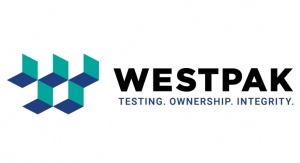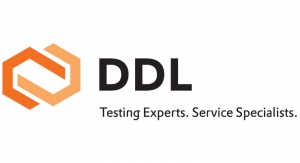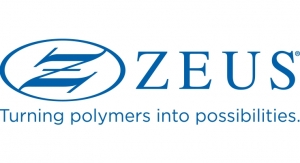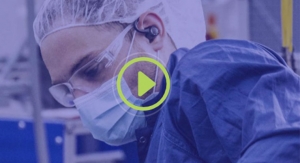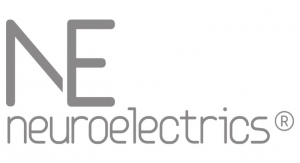Sandi Schaible, Senior Director, Analytical Chemistry and Regulatory Toxicology, WuXi AppTec Medical Device Testing04.01.21
In recent years, medical device manufacturers have faced rapidly evolving expectations about conducting biocompatibility testing to support preclinical product safety testing. With the recent changes to ISO 10993, the evaluation of biological safety of devices is experiencing some of the most significant changes in history.
Regulators quickly adopted the publication of ISO 10993-1:2018 (Part 1) because it requires manufacturers to develop biological test strategies based on their devices' potential risks. With this new guidance, physical and chemical information should be the starting point for identifying device-specific risks.
Additionally, the number of devices that fall within reach of ISO 10993-1 and corresponding guidance documents has rapidly expanded. Teams still familiarizing themselves with these evaluation processes and regulatory expectations should take the time to understand the history of the methods at hand, the thought process that has advanced it, and how to apply this historical lens moving forward.
The Debut of Chemical Characterization
Manufacturers became accustomed to conducting a more standardized set of tests based on their device's contact type and duration before the revised ISO 10993-1 was released in 2018. Testing strategies specific to the device were not common, and oftentimes, the testing that could reveal unknown risks, such as the chemical characterization and risk assessment, was the final task left before product approval submission. This approach could, at times, leave manufacturers scrambling at the last moment to mitigate unanticipated risks.
During this period of time, the shift to identifying potentially harmful compounds earlier in the process was gaining traction with regulatory bodies. With the pathway to submission leaving little room for error, this new mindset often left sponsors with concerns they may not have planned to address.
The U.S. Food and Drug Administration (FDA) created a launchpad for revising the standard through its 2016 Draft Guidance on the Use of ISO 10993 Part 1. The guidance outlined the role of chemical characterization in the process and the importance of addressing it first. This FDA guidance played an instrumental role in revising ISO 10993-1, which formalized chemical characterization and the subsequent risk assessment as a fundamental requirement in assessing a device's safety.
Chemical characterization can take many forms, from a paper-based review of all materials to a targeted study focusing on one compound of concern. Most frequently, it requires an extractables study consisting of exaggerated extraction of the device, followed by an analysis of the chemical constituents using a range of analytical methods.
In the early days, high-risk devices were typically the products that required chemical characterization. Slowly, chemistry became a requirement for other devices, including permanent implants, prolonged contacting devices, and devices in contact with circulating blood.
The revised version of ISO 10993-1 was released in 2018 and created a new standard that prioritized chemical characterization in evaluating a medical device's biological safety. This standard continued to drive the shift in regulatory expectations and the changing approach to determining biocompatibility endpoints. As reviewers became savvier from a technical standpoint, they began to ask more questions and required manufacturers justify their scientific approach to chemical characterization.
The Evolution of Testing Methods
As testing evolved, regulators supported the refinement of acceptable testing plans to include chemical characterization. These analytically selective and sensitive methods began to prove their value as the industry shifted from a checklist approach to a more strategic method of biological safety testing. Over time, the requirements for conducting chemistry testing have improved and become more rigorous.
One example of the evolving testing requirements is how the number of solvents applied by laboratories has increased in addition to the aggressiveness of the extractions themselves. The pendulum continued to swing, applying exhaustive extraction techniques to both prolonged and permanent devices. This change pushed a growing portion of the market to new lengths, which led to extended testing timelines and increasing costs.
Identifying the compounds detected in chemical characterization studies was no longer nice-to-have information but mandatory for the risk assessment process. A more robust understanding of chemicals present allowed for improved risk assessments. Effectively interpreting this data often requires a collaborative team that is in tune with how each regulatory body interprets the guidance at the given moment.
The publication of ISO 10993-18:2020 introduces the analytical evaluation threshold (AET), which is the conversion from a dose-based threshold used by toxicologists to a concentration-based threshold used by chemists. The AET requires a partnership between the chemist and the toxicologist who will perform the risk assessment. Together they use inputs including the frequency and duration of the medical device’s clinical use, the extraction information used in the laboratory, and the uncertainty of the analytical method(s) to determine a level for which compounds detected in the chemistry study need to be identified. Not only does it create a “common language” between two integral parts of the evaluation process, but it levels the playing field of what manufacturers should expect from their laboratory testing partners.
Regulators are gradually implementing enhanced material identification expectations across the board and driving the importance of advanced chemical characterization. This is evident by the release of the FDA guidance, Use of International Standard ISO 10993-1, “Biological evaluation of medical devices - Part 1: Evaluation and testing within a risk management process.” Manufacturers must be on their toes to keep up and consistently assess their compliance with the latest requirements.
Continued Evolution, Continued Investments
In a perpetual effort to better understand the chemical risks of devices entering the market, the industry continues to establish more consistent and thorough evaluation procedures that better recognize the risks associated with each device.
The different chemical characterization methods are ever-evolving, and regulators expect more information from these studies, including a justification of the approach (i.e., choice of solvents, analytical method, and extraction conditions). To keep up with this process, manufacturers should maintain current records that include regulators' current expectations. Legacy products and those with testing procedures dated from even just a few years ago may have a lot of catching up to do.
For many products, testing completed before the release of ISO 10993-18:2020 is likely obsolete with the current chemical characterization studies' expectations. Managing a range of products in this environment can be an arduous process during the transition, but the efforts will benefit patients in the long run.
Looking Forward
The medical device industry is always working toward ensuring patient safety remains the top priority, and the methods for supporting safety through testing will continue to evolve. Manufacturers should understand the latest requirements and be prepared to invest in a quality chemical characterization study to ensure a solid foundation for the rest of their program. In fact, in the next year or so, an updated ISO 10993-17 guidance document will provide manufacturers additional information on performing toxicological risk assessments of these chemical constituents.
Medical device companies are responsible for evaluating their product’s safety before entering the market, but it is not a challenge they should face alone. Leaning on industry partners involved in the regulatory landscape can help companies stay relevant and competitive by maintaining the most up-to-date technical files. More information on regulatory expectations and some additional tips on preparing for regulatory requests and minimizing impact can be found at bit.ly/3qRiTFD.
Sandi Schaible is the senior director of analytical chemistry and regulatory toxicology at St. Paul, Minn.-based WuXi AppTec Medical Device Testing, which specializes in extractables and leachables studies. She is a U.S. delegate and international delegate for ISO 10993 part 18 in chemical characterization, and also a U.S. delegate for ISO 10993 part 13 and the particulates committee (TIR42).
Regulators quickly adopted the publication of ISO 10993-1:2018 (Part 1) because it requires manufacturers to develop biological test strategies based on their devices' potential risks. With this new guidance, physical and chemical information should be the starting point for identifying device-specific risks.
Additionally, the number of devices that fall within reach of ISO 10993-1 and corresponding guidance documents has rapidly expanded. Teams still familiarizing themselves with these evaluation processes and regulatory expectations should take the time to understand the history of the methods at hand, the thought process that has advanced it, and how to apply this historical lens moving forward.
The Debut of Chemical Characterization
Manufacturers became accustomed to conducting a more standardized set of tests based on their device's contact type and duration before the revised ISO 10993-1 was released in 2018. Testing strategies specific to the device were not common, and oftentimes, the testing that could reveal unknown risks, such as the chemical characterization and risk assessment, was the final task left before product approval submission. This approach could, at times, leave manufacturers scrambling at the last moment to mitigate unanticipated risks.
During this period of time, the shift to identifying potentially harmful compounds earlier in the process was gaining traction with regulatory bodies. With the pathway to submission leaving little room for error, this new mindset often left sponsors with concerns they may not have planned to address.
The U.S. Food and Drug Administration (FDA) created a launchpad for revising the standard through its 2016 Draft Guidance on the Use of ISO 10993 Part 1. The guidance outlined the role of chemical characterization in the process and the importance of addressing it first. This FDA guidance played an instrumental role in revising ISO 10993-1, which formalized chemical characterization and the subsequent risk assessment as a fundamental requirement in assessing a device's safety.
Chemical characterization can take many forms, from a paper-based review of all materials to a targeted study focusing on one compound of concern. Most frequently, it requires an extractables study consisting of exaggerated extraction of the device, followed by an analysis of the chemical constituents using a range of analytical methods.
In the early days, high-risk devices were typically the products that required chemical characterization. Slowly, chemistry became a requirement for other devices, including permanent implants, prolonged contacting devices, and devices in contact with circulating blood.
The revised version of ISO 10993-1 was released in 2018 and created a new standard that prioritized chemical characterization in evaluating a medical device's biological safety. This standard continued to drive the shift in regulatory expectations and the changing approach to determining biocompatibility endpoints. As reviewers became savvier from a technical standpoint, they began to ask more questions and required manufacturers justify their scientific approach to chemical characterization.
The Evolution of Testing Methods
As testing evolved, regulators supported the refinement of acceptable testing plans to include chemical characterization. These analytically selective and sensitive methods began to prove their value as the industry shifted from a checklist approach to a more strategic method of biological safety testing. Over time, the requirements for conducting chemistry testing have improved and become more rigorous.
One example of the evolving testing requirements is how the number of solvents applied by laboratories has increased in addition to the aggressiveness of the extractions themselves. The pendulum continued to swing, applying exhaustive extraction techniques to both prolonged and permanent devices. This change pushed a growing portion of the market to new lengths, which led to extended testing timelines and increasing costs.
Identifying the compounds detected in chemical characterization studies was no longer nice-to-have information but mandatory for the risk assessment process. A more robust understanding of chemicals present allowed for improved risk assessments. Effectively interpreting this data often requires a collaborative team that is in tune with how each regulatory body interprets the guidance at the given moment.
The publication of ISO 10993-18:2020 introduces the analytical evaluation threshold (AET), which is the conversion from a dose-based threshold used by toxicologists to a concentration-based threshold used by chemists. The AET requires a partnership between the chemist and the toxicologist who will perform the risk assessment. Together they use inputs including the frequency and duration of the medical device’s clinical use, the extraction information used in the laboratory, and the uncertainty of the analytical method(s) to determine a level for which compounds detected in the chemistry study need to be identified. Not only does it create a “common language” between two integral parts of the evaluation process, but it levels the playing field of what manufacturers should expect from their laboratory testing partners.
Regulators are gradually implementing enhanced material identification expectations across the board and driving the importance of advanced chemical characterization. This is evident by the release of the FDA guidance, Use of International Standard ISO 10993-1, “Biological evaluation of medical devices - Part 1: Evaluation and testing within a risk management process.” Manufacturers must be on their toes to keep up and consistently assess their compliance with the latest requirements.
Continued Evolution, Continued Investments
In a perpetual effort to better understand the chemical risks of devices entering the market, the industry continues to establish more consistent and thorough evaluation procedures that better recognize the risks associated with each device.
The different chemical characterization methods are ever-evolving, and regulators expect more information from these studies, including a justification of the approach (i.e., choice of solvents, analytical method, and extraction conditions). To keep up with this process, manufacturers should maintain current records that include regulators' current expectations. Legacy products and those with testing procedures dated from even just a few years ago may have a lot of catching up to do.
For many products, testing completed before the release of ISO 10993-18:2020 is likely obsolete with the current chemical characterization studies' expectations. Managing a range of products in this environment can be an arduous process during the transition, but the efforts will benefit patients in the long run.
Looking Forward
The medical device industry is always working toward ensuring patient safety remains the top priority, and the methods for supporting safety through testing will continue to evolve. Manufacturers should understand the latest requirements and be prepared to invest in a quality chemical characterization study to ensure a solid foundation for the rest of their program. In fact, in the next year or so, an updated ISO 10993-17 guidance document will provide manufacturers additional information on performing toxicological risk assessments of these chemical constituents.
Medical device companies are responsible for evaluating their product’s safety before entering the market, but it is not a challenge they should face alone. Leaning on industry partners involved in the regulatory landscape can help companies stay relevant and competitive by maintaining the most up-to-date technical files. More information on regulatory expectations and some additional tips on preparing for regulatory requests and minimizing impact can be found at bit.ly/3qRiTFD.
Sandi Schaible is the senior director of analytical chemistry and regulatory toxicology at St. Paul, Minn.-based WuXi AppTec Medical Device Testing, which specializes in extractables and leachables studies. She is a U.S. delegate and international delegate for ISO 10993 part 18 in chemical characterization, and also a U.S. delegate for ISO 10993 part 13 and the particulates committee (TIR42).

